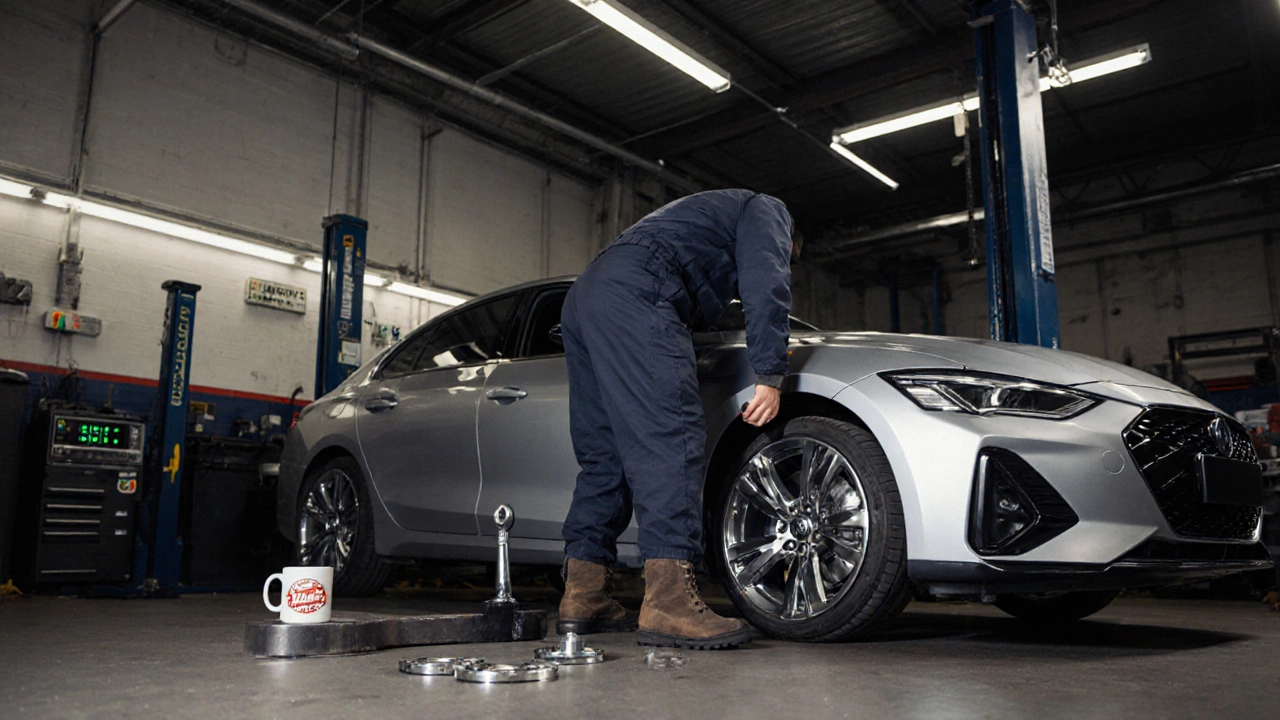Wheel Offset Explained: Fit, Look and Performance Made Simple
If you’ve ever stared at a set of rims and wondered why they sit so far in or out, the answer is wheel offset. It’s the distance between the wheel’s mounting surface and its centre line. A correct offset keeps the tyre inside the wheel well, protects the suspension and makes the car look right. Get the basics right and you’ll avoid costly rubbing, uneven tyre wear and handling quirks.
What Is Wheel Offset?
Offset is measured in millimetres and comes in three flavours: positive, negative and zero. Positive offset means the mounting face sits toward the outer edge of the wheel – most front‑wheel cars use this. Negative offset pushes the face toward the inside, common on older rear‑drive or off‑road rigs. Zero offset sits right in the middle, which is rare on modern street cars.
Car manufacturers pick an offset that matches the original suspension geometry. When you change wheels – larger diameter, different width or a new design – you also change the offset. That’s why a quick check of the wheel spec sheet matters before you order.
Choosing the Right Offset for Your Car
Start with the factory spec. Look for a sticker on the door jamb, in the owner’s manual or on the tyre placard. It will list a range, like +35 mm to +45 mm. Staying inside that range keeps the tyre inside the wheel well and the steering geometry unchanged.
If you want a wider wheel for a broader stance, you’ll need a higher positive offset or a thinner tyre sidewall to keep the outer edge from hitting the fender. The rule of thumb: each 1 mm of offset change moves the wheel about 1 mm sideways. So a +10 mm shift moves the wheel 10 mm outward.
Negative offset gives a more aggressive look because the wheel sticks out. It’s popular for trucks and off‑road builds, but it also moves the scrub radius, which can change steering feel. If you go negative, check for clearance on the inner suspension components and brake calipers.
Don’t forget the tyre width. A 225 mm tyre on a 6‑inch wide rim sits differently than a 205 mm tyre on the same rim. Wider tyres need a slightly higher offset to stay tucked in.
When in doubt, use an online offset calculator. Input wheel width, tyre size and your desired stance, and the tool will spit out the required offset. Most reputable wheel retailers have these calculators on their sites.
Finally, think about the impact on handling. Too much positive offset can make the steering feel light and increase torque steer on front‑wheel drive cars. Too much negative offset can make the car feel tighter in corners but may stress the wheel bearings.
In short, the right offset balances aesthetics, clearance and driving dynamics. Stick close to the factory range, adjust slowly, and always double‑check for rubbing after you fit new wheels.
Need help picking the perfect set for your Nottingham ride? Our team at Nottingham Car Wraps & Styling can match wheels and offsets to your wrap design, ensuring a seamless look from tyre to paint. Reach out for a quick fitment check – it’s free and saves you time down the road.
Wheel spacers themselves don't hurt gas mileage, but when paired with wider tires or poor installation, they can reduce fuel efficiency. Learn the real impact and how to avoid losing MPG.
Discover whether wheel spacers require alignment, how to install them correctly, and the impact on suspension, tire wear, and safety. Get expert tips and a clear comparison.


